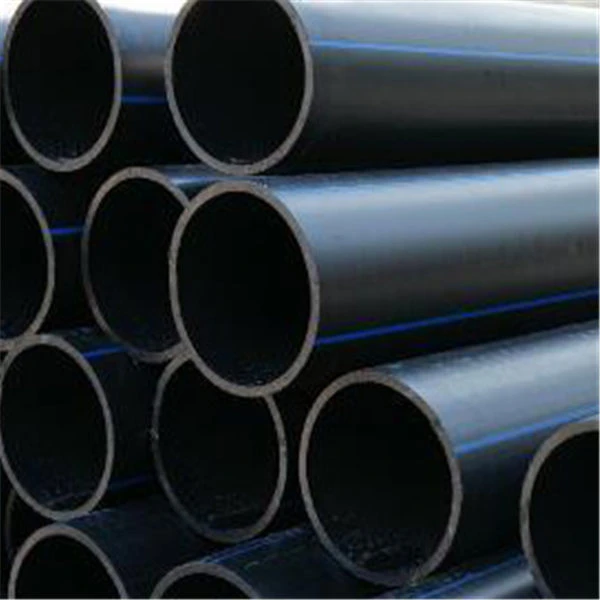Dez . 21, 2024 12:58 Back to list
High-Density Polyethylene Irrigation Pipe Fittings for Efficient Water Management Solutions
Understanding HDPE Irrigation Pipe Fittings A Comprehensive Overview
High-Density Polyethylene (HDPE) has emerged as a popular choice for irrigation systems due to its outstanding durability, flexibility, and resistance to corrosion. One of the integral components of any irrigation setup is the pipe fittings that connect and secure the piping system. This article will delve into the world of HDPE irrigation pipe fittings, exploring their types, applications, benefits, and installation techniques.
What are HDPE Irrigation Pipe Fittings?
HDPE irrigation pipe fittings refer to the connectors that join various sections of HDPE pipes used for irrigation. These fittings can take various forms, including elbows, tees, couplings, reducers, and end caps. Each type serves a distinct purpose, ensuring that the irrigation system operates efficiently while meeting the specific needs of agricultural or horticultural projects.
Types of HDPE Irrigation Pipe Fittings
1. Elbows Elbow fittings allow for a change of direction in the piping system, typically at 90 or 45 degrees. This is crucial for navigating around obstacles or designing a more effective irrigation layout.
2. Tees Tee fittings are used to create a branch in the irrigation line. They are essential for splitting the flow of water to multiple areas, ensuring that every part of the field receives adequate irrigation.
3. Couplings Couplings are simple fittings that connect two sections of pipe. They are generally used to extend the length of the piping system or to replace a damaged section.
4. Reducers These fittings are used when transitioning between two different pipe diameters. A reducer ensures a smooth flow of water when there is a change in pipe size, preventing leaks and enhancing efficiency.
5. End Caps End caps are used to seal the ends of pipes. They are often employed in systems where a section of the pipe is not needed for water flow.
Advantages of Using HDPE Pipe Fittings
HDPE pipe fittings offer several advantages that make them ideal for irrigation systems
- Durability HDPE is resistant to a wide range of chemicals and corrosion, ensuring a long lifespan for the fittings and the entire irrigation system.
hdpe irrigation pipe fittings

- Flexibility The flexibility of HDPE allows the fittings to withstand ground movement and pressure changes without cracking or breaking.
- Lightweight Compared to traditional materials like metal, HDPE fittings are lightweight, making them easier to handle and install
.- Cost-Effective The long lifespan and low maintenance requirement of HDPE fittings contribute to lower long-term costs, making them an economically viable option.
- Eco-Friendly HDPE is recyclable, which meets the increasing demand for sustainable agricultural practices.
Installation Techniques
Proper installation of HDPE irrigation pipe fittings is crucial for the overall functionality of the system. The installation process typically involves the following steps
1. Preparation Begin by measuring and cutting the HDPE pipes to the required lengths. Ensure that the cuts are straight and even.
2. Cleaning Remove any dirt, debris, or moisture from the pipe ends and fittings to ensure a secure connection.
3. Heating/Joining Depending on the type of jointing method—such as butt fusion or electrofusion—apply the appropriate heat and pressure to join the fittings with the pipes. It’s essential to follow the manufacturer’s recommendations for temperatures and times to achieve a strong bond.
4. Testing After installation, it’s critical to test the system for leaks. Conduct a pressure test to ensure that all connections are secure and functioning as intended.
5. Final Checks Once the irrigation system is tested and confirmed operational, cover any dug areas and restore the landscape.
Conclusion
HDPE irrigation pipe fittings are a vital component of modern irrigation systems, offering durability, flexibility, and ease of installation. Understanding the various types of fittings and how to install them can significantly enhance the efficiency and longevity of irrigation projects. As agriculture becomes more technology-driven, adopting reliable materials like HDPE will only become more important for sustainable farming practices. Whether you are a farmer, landscaper, or irrigation specialist, being well-informed about HDPE fittings can lead to better water management and crop yields.
-
Durable PP Rigid Sheet: Lightweight, Chemical Resistant Solutions
NewsAug.21,2025
-
PVC Grey Sheet for Extraction: Chemical Resistant & Durable
NewsAug.19,2025
-
Durable PVC Pipe Fittings for Plumbing & Irrigation Needs
NewsAug.18,2025
-
HDPE Steel Belt Reinforced Spiral Corrugated Pipe | High Strength
NewsAug.17,2025
-
HDPE Pipe Fittings: Durable, Leak-Proof Solutions
NewsAug.16,2025
-
Premium CPVC Sheet: High-Temp & Chemical Resistant Solutions
NewsAug.15,2025

